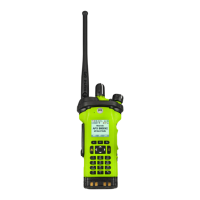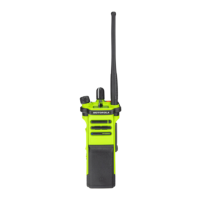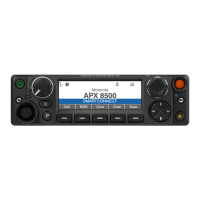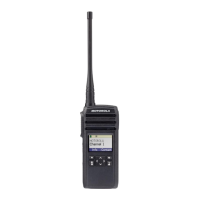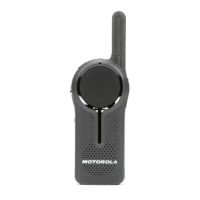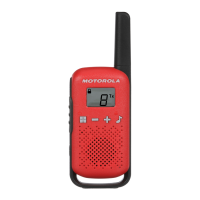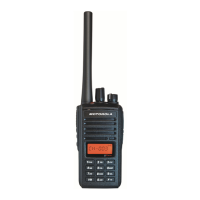7.18.3.9
Hear Clear
Hear-Clear is a noise reduction system that consists of Companding and Random FM Noise Canceller.
Companding
Reduces the channel noise, such as OTA transmission that is predominantly present in UHF2 and
900 MHz channel with the following features:
Compressor
Reduces the background noise flow and the speech signal at transmitting radio.
Expander
Expands the speech while the noise flow remains the same at receiving radio.
Random FM Noise Canceller (Flutter Fighter)
Reduces the unwanted effects of random FM noise pulses caused by channel fading under high
Signal-to-Noise (S/N) conditions such as in a moving transportation. The fading effects, heard as
audio pops and clicks, are canceled without affecting the desired audio signal.
The Random FM Noise Canceller operates only in receive mode.
NOTE: This feature must be programmed by a qualified radio technician. For more information,
contact your system administrator.
7.19
Radio Inhibit
This feature allows the system administrator to put a radio into a nonfunctional state when the radio is
missing or in an unknown hand. The radio stays in this state regardless of its power changes.
NOTE:
If the radio has Intersystem roaming capability, the system administrator is able to put the radio
into a nonfunctional state when the missing radio roams to another system.
The radio can only be uninhibited by receiving an uninhibited command from the system
administrator.
7.20
Location
The Global Navigation Satellite System (GNSS) in the radio integrates information from the Global
Positioning System (GPS) and the Global Navigation Satellite System (GLONASS) to determine the
approximate geographical location of your radio.
NOTE: The Location feature is addressed as Global Positioning System (GPS) across the
manual as the naming convention of the buttons and strings remain the same as the legacy
feature of GPS.
The availability and accuracy of this location information and the calculation duration can vary
depending on the environment in which you are using the GPS feature. For example, GPS location
fixes are difficult to obtain indoors, in covered locations, between high buildings, or in situations where
you have not established a clear broad view of the sky.
If adequate signals from multiple satellites are available, your GPS feature only provides an
approximate location, usually within 10 meters from your actual location, but sometimes farther away.
Sometimes, the GPS feature cannot complete a location calculation successfully. You will then see a
message indicating that your radio cannot connect to enough visible satellites.
To maximize the ability of your radio to determine a fix, take note of the following guidelines:
• For your initial fix, hold the radio in the face position.
MN001424A01-AW
Chapter 7 : Advanced Features
92

